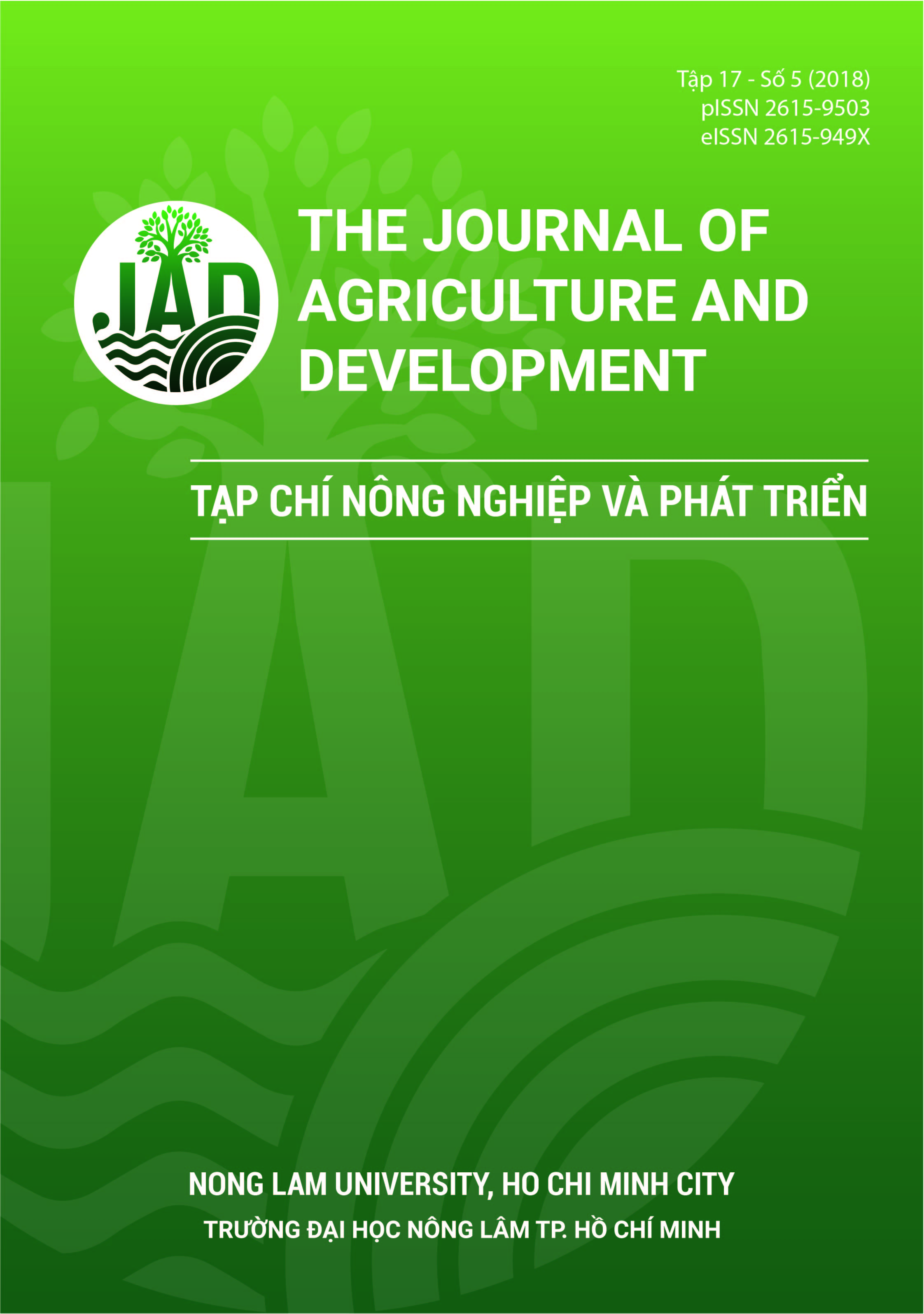Nghiên cứu quy trình chế biến nước sơ ri lên men
Main Article Content
Tóm tắt
Đề tài đã nghiên cứu một số thông số kỹ thuật chính trong quy trình chế biến nước sơ ri lên men bao gồm giống sơ ri, độ chín của giống, bổ sung enzyme pectinex, nồng độ đường, điều kiện lên men và chế độ thanh trùng. Các thí nghiệm được thiết kế theo kiểu hoàn toàn ngẫu nhiên một hoặc hai yếu tố, để xác định các yếu tố xử lý phù hợp nhất dựa trên các thông số đánh giá, bao gồm hàm lượng vitamin C, chất lượng cảm quan và tính chất hóa lý của nước quả.
Nghiên cứu cho thấy giống sơ ri Brazil (Malpiphia emarginata DC) có hàm lượng vitamin C cao nhất (1567,9 mg/100 g), tiếp theo là giống sơ ri chua (Malpiphia glabra L.) (882,9 mg/100 g) và giống sơ ri ngọt (Malpiphia punicifolia L.) (630,4 mg/100 g). Tuy nhiên, theo kết quả đánh giá cảm quan, sơ ri chua sau lên men có điểm tổng thể cao nhất, phù hợp cho quá trình chế biến. Nước lên men thu được từ giống sơ ri chua này ở độ chín 100% đạt điểm cảm quan và hàm lượng vitamin C cao nhất so với các mức độ chín khác. Để hỗ trợ làm trong dịch quả, tỷ lệ bổ sung enzyme pectinase (Pectinex ultra SPL, Novozymes) 0,15% có hiệu quả hơn so với với tỉ lệ 0,05% và 0,1%. Quá trình lên men ở nhiệt độ 15oC trong 48 giờ với nồng độ đường 22% và tỉ lệ men (Saf-instant, Pháp) bổ sung 0,1% cho nước lên men sơ ri có chất lương tốt chất. Sản phẩm sau lên men được thanh trùng ở 80oC trong 10 phút ức chế được quá trình lên men cũng như giữ được màu sắc, mùi vị cho sản phẩm nước sơ ri lên men. Sau 6 tháng bảo quản, chất lượng dinh dưỡng, cảm quan và vi sinh vật của sản phẩm thay đổi không đáng kể.
Article Details
Tài liệu tham khảo
Arroyo-López, F. N., Orli´c, S., Querol, A., & Barrio, E. (2009). Effects of temperature, pH and sugar concentration on the growth parameters of Saccharomyces cerevisiae, S. kudriavzevii and their interspecific hybrid. International Journal of Food Microbiology 131(2-3), 120-127. https://doi.org/10.1016/j.ijfoodmicro.2009.01.035
Delva, L., & Schneider, R. G. (2013). Acelora (Malpighia emarginata DC): Production, Postharvest handling, Nutrition, and Biological Activity. Food Reviews International 29(2), 107-126. https://doi.org/10.1080/87559129.2012.714433
Ha, T. D. (2000). Methods for sensory analysis of food. Ha Noi, Vietnam: Science and Technics Publishing House.
Horemans N., Foyer, C.H., & Asard, H. (2000). Transport and action of ascorbate at the plant plasma membrane. Trends in plants Science 5(6), 263-267. https://doi.org/10.1016/S1360-1385(00)01649-6
Johnson, P. D. (2003). Acelora (Malpighia glabra L., M. punicifolia L., M. emarginated D.C): Agriculture, production and nutrition. World Review of Nutrition and Dietetics 91, 67-75.
Lam, P. K. (2009). Vitamin C (Unpublished bachelor’s thesis). University of Technology, Ho Chi Minh City, Vietnam.
Lawless, H. T., & Heymann, H. (2010). Sensory evaluation of food: Principles and practices. New York, USA: Springer
Nguyen, M. V. (2004). Biochemical practice. Ha Noi, Vietnam: Science and Technics Publishing House.
Peddie, H. A. B. (1990). Ester formation in brewery fermentations. Journal of the Institute Brewing 96(5), 327-331. https://doi.org/10.1002/j.2050-0416.1990.tb01039.x
Rocha, I. F. O., & Bolini, H. M. A. (2015). Passion fruit juice with different sweeteners: Sensory profile by descriptive analysis and acceptance. Food Science and Nutrition 3(2), 129-139. https://doi.org/10.1002/fsn3.195
Sharma, H. P., Patel, H., & Sugandha. (2017). Enzymatic added extraction and clarification of fruit juices - A review. Critical Reviews in Food Science and Nutrition 57(6), 1215-1227. https://doi.org/10.1080/10408398.2014.977434
QCVN (Technical Regulations of Vietnam). (2010). QCVN 6-3: 2010/BYT: National technical regulations for alcoholic beverages. Ha Noi, Vietnam: Ministry of Health.
Stone, H., & Sidel, J. (2004). Sensory evaluation practices (3rd ed.). California, USA: Academic Press.
TCVN (Vietnamese National Standards). (2009). TCVN 8008:2009: Distilled alcohol-alcoholic content determination. Ha Noi, Vietnam: Ministry of Science and Technology.
Tran, L. T. B., Ton, N. M. N., & Dinh, T. N. T. (2004). Biochemical food experiment. Ho Chi Minh City, Vietnam: VNUHCM Publishing House.
Vendramini, A., & Trugo, L. (2000). Chemical composition of acelora fruit (Malpighia punicifolia L.) at three mination stages of maturity. Food chemistry 71(2), 195-198. https://doi.org/10.1016/S0308-8146(00)00152-7








